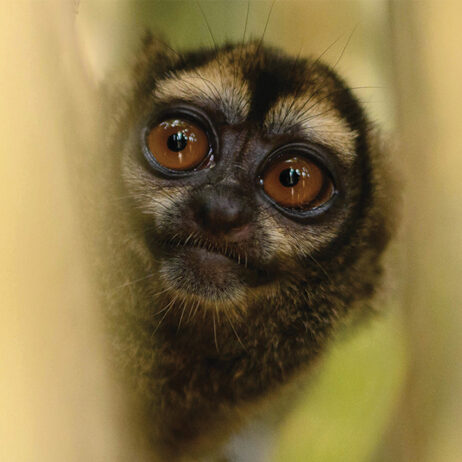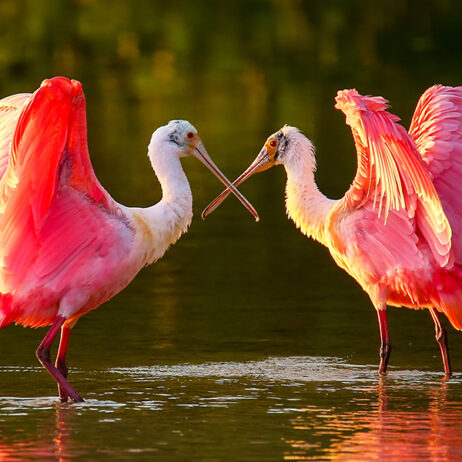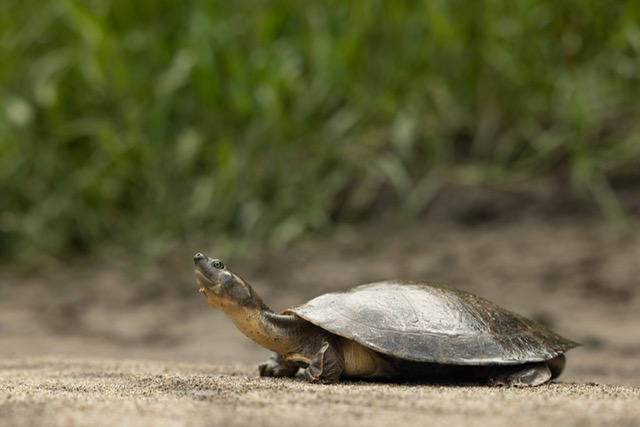
One of a kind: the Critically Endangered Magdalena River Turtle. Credit: Callie Broaddus
The Magdalena River Turtle (Podocnemis lewyana) is one of Colombia’s most remarkable species and one of its most threatened. Found nowhere else, this Critically Endangered freshwater turtle was recently named among the world’s most imperilled turtles in the 2025 report: Turtles in Trouble.
We spoke to Pearson McGovern, a freshwater turtle specialist who has worked with Fundación Biodiversa Colombia (FBC) for the past three years, about what makes this turtle so unique, what threatens its survival, and how current conservation efforts – including World Land Trust’s (WLT’s) latest appeal to protect El Silencio Reserve – could secure a future for this ancient species.
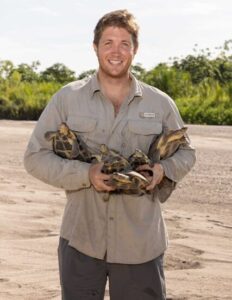
An armful of turtles. Pearson’s research regularly takes him to the most remote corners of the world studying little-known freshwater turtles. Credit: Callie Broaddus
What makes the Magdalena River Turtle so special?
“This turtle is endemic to Colombia – you won’t find it anywhere else. It’s also the only member of its family Podocnemididae found northwest of the Andes, which makes it incredibly unique in evolutionary terms.
They’re also just very charismatic turtles. Adults are largely vegetarian, feeding almost entirely on vegetation, seeds, and leaves. It means when we trap them for research, instead of using fish or meat like I would for other species, we’re putting out bundles of plantains or leaves – which is pretty fun.
They also exhibit high sexual dimorphism whereby the females can weigh almost four times as much as the males and develop these incredible bright red heads. To see one of those huge females basking with smaller juveniles and mid-sized males on a log is just spectacular – you get the full story of the population in a single glance.”
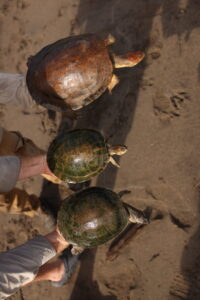
This photo highlights the sexual dimorphism between female and male turtles, with the females significantly larger and red in colour. Credit: Callie Broaddus
What have been your most memorable encounters?
“I have two, one rather sad and the other hopeful. My first is when I visited Bocas de Barbacoas, a small fishing community that borders the El Silencio Reserve. I was walking through the village and noticed painted turtle shells decorating a home that doubled as a shop.
The woman living there kindly let me take measurements, and some of those shells were enormous – within a centimetre of the species’ size record. It showed me two things at once: how important these turtles have been culturally, harvested and eaten for generations, but also how much we still don’t know about their natural history. We rarely see animals of that size today and can only guess at how large they may once have grown.”
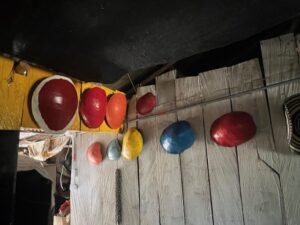
These turtle shells show how large these individuals can grow within the project region. Very large individuals are still seen today but such sightings are becoming less common. Credit: Pearson McGovern
“Another time, while surveying El Jardín – one of the two properties that will be acquired through this appeal – we found dozens of hatchlings basking along a tributary, and even the remains of two large females predated by jaguars.
That was an amazing sign. It showed us all life stages are present, and that the population is healthy enough to still be part of those natural predator-prey relationships.”
What are the biggest threats facing the species?
“The number one pressure is harvesting. It’s deeply cultural – especially during Holy Week in Lent, when turtles are seen as a “white meat” alternative. People will put aside other jobs and focus entirely on collecting turtles and their eggs. Because nesting females are so vulnerable – they go into a kind of trance when laying eggs – hunters can take the eggs and the adult females at the same time. For a species that depends on high female survival, that’s catastrophic.
Dams on major rivers like the Sinú can also be devastating, with sudden releases of water flooding and destroying the majority of nests.
The good news is there are things we can do. On the Sinú River, for example, there are programmes to rescue and incubate thousands of eggs each year with high success rates.”
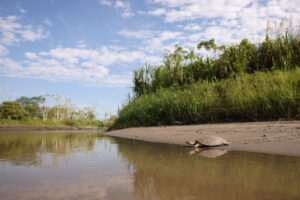
This appeal will protect habitat similar to this one shown here, with abundant food, shelter, and sunlight for egg incubation. Credit: Callie Broaddus
Why is this appeal so special?
“This appeal will protect a parcel of land called El Jardín which has a nine-kilometre tributary that functions as a nursery and nesting site. The importance of this is hard to overstate: on one side of the stream you’ve got flooded forest overhanging the water, dropping fruit and seeds into the river – the perfect food source.
On the other, an open bank shaped by decades of cattle use that turtles now use for nesting. It’s high enough not to flood and sunny enough to support this species’ high egg incubation temperatures. Best of all, it’s not accessible by boat so provides vital protection at the turtles’ most vulnerable life stage – eggs and juveniles.”
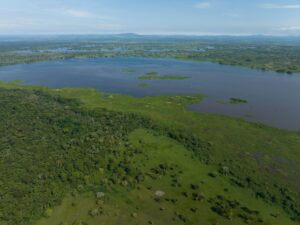
If successful, this appeal will enable El Silencio to protect five species of freshwater turtle, each unique and with very distinct habitat requirements. Credit: Callie Broaddus
“On top of that, once these land purchases are complete, the El Silencio Reserve will protect five turtle species within the Middle Magdalena Valley. To safeguard five very distinct species – each with very different habitat requirements – is incredibly special and speaks to the conservation importance of this landscape.”
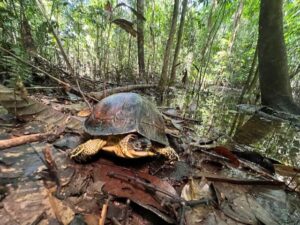
The Colombian Wood Turtle (Rhinoclemmys melanosterna) is one of the five species – together with the Magdalena River Turtle – that this reserve will protect. Credit: Zane Libke
How do you sensitively work with local communities, considering harvesting is part of culture?
“There’s still some consumption, but people notice the difference – they know there are fewer turtles and fish today than in the past. That awareness helps start conversations about sustainability.
You have to show that you’re there for the long haul, that there’s give and take, and that communities will also see benefits. Many already recognise that these resources are limited – they see how pollution, river changes and overharvesting have all played a part. That understanding helps us find common ground.
It’s not about condemning traditions but improving the situation together. We’re not there to get anyone in trouble; we’re there to protect a species and a way of life. These are balanced, empathetic conversations that take time, but over the years, many communities have become true partners and protectors of the turtles.
When they see that this species is valued around the world, they become a source of great pride.”
To learn more about the Magdalena River Turtle, click here.

Act now and support our autumn appeal to protect the Magdalena River Turtle before it is too late.

